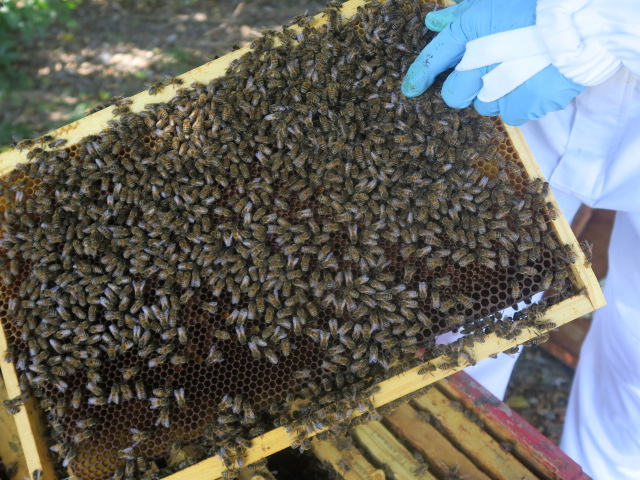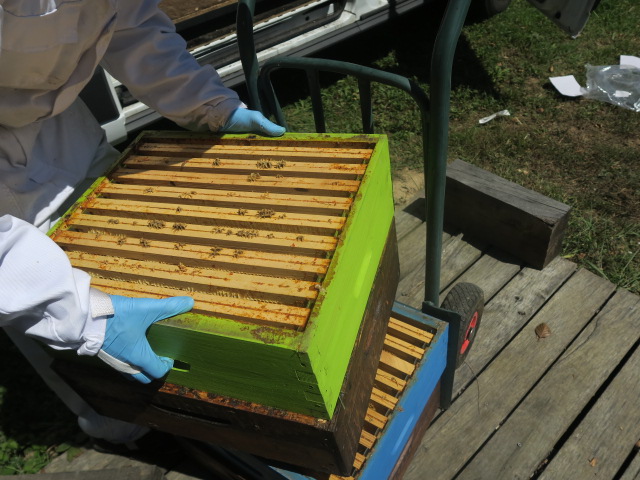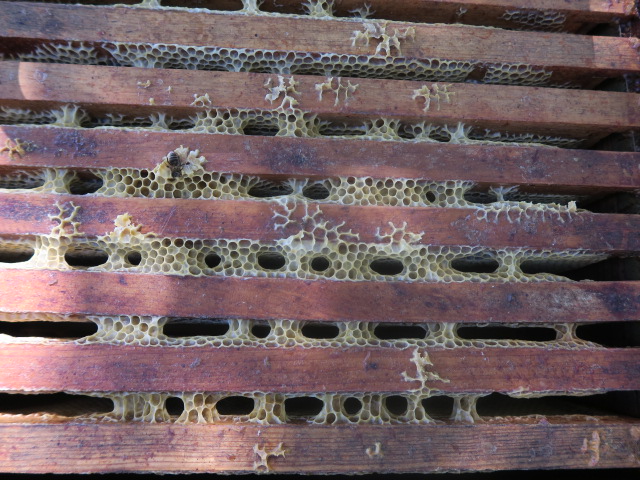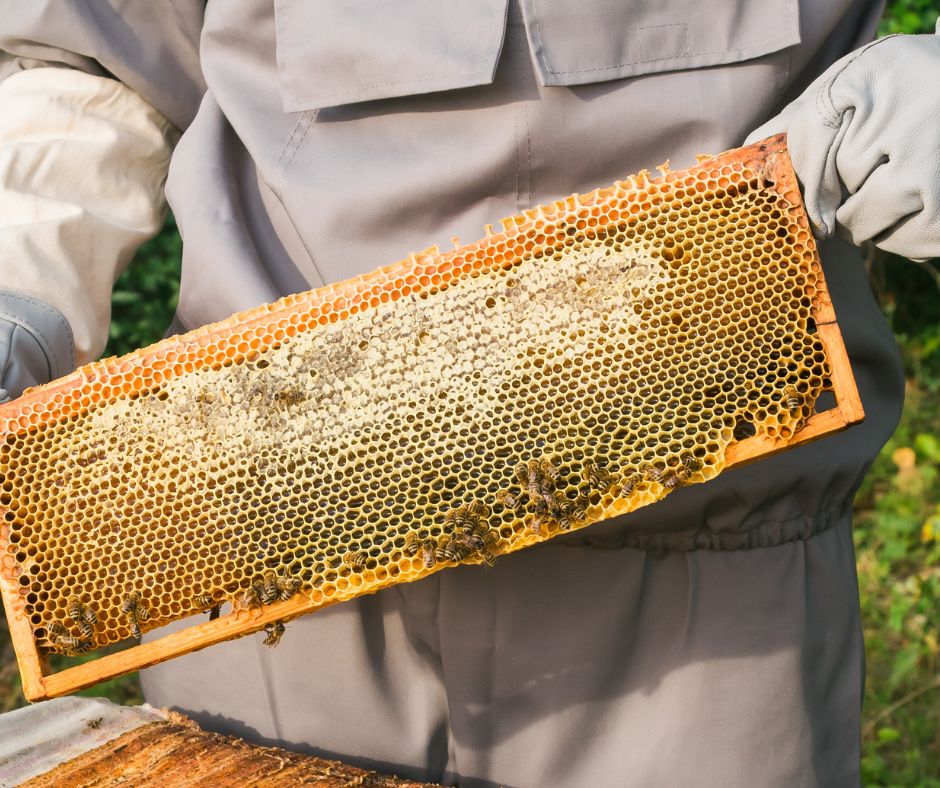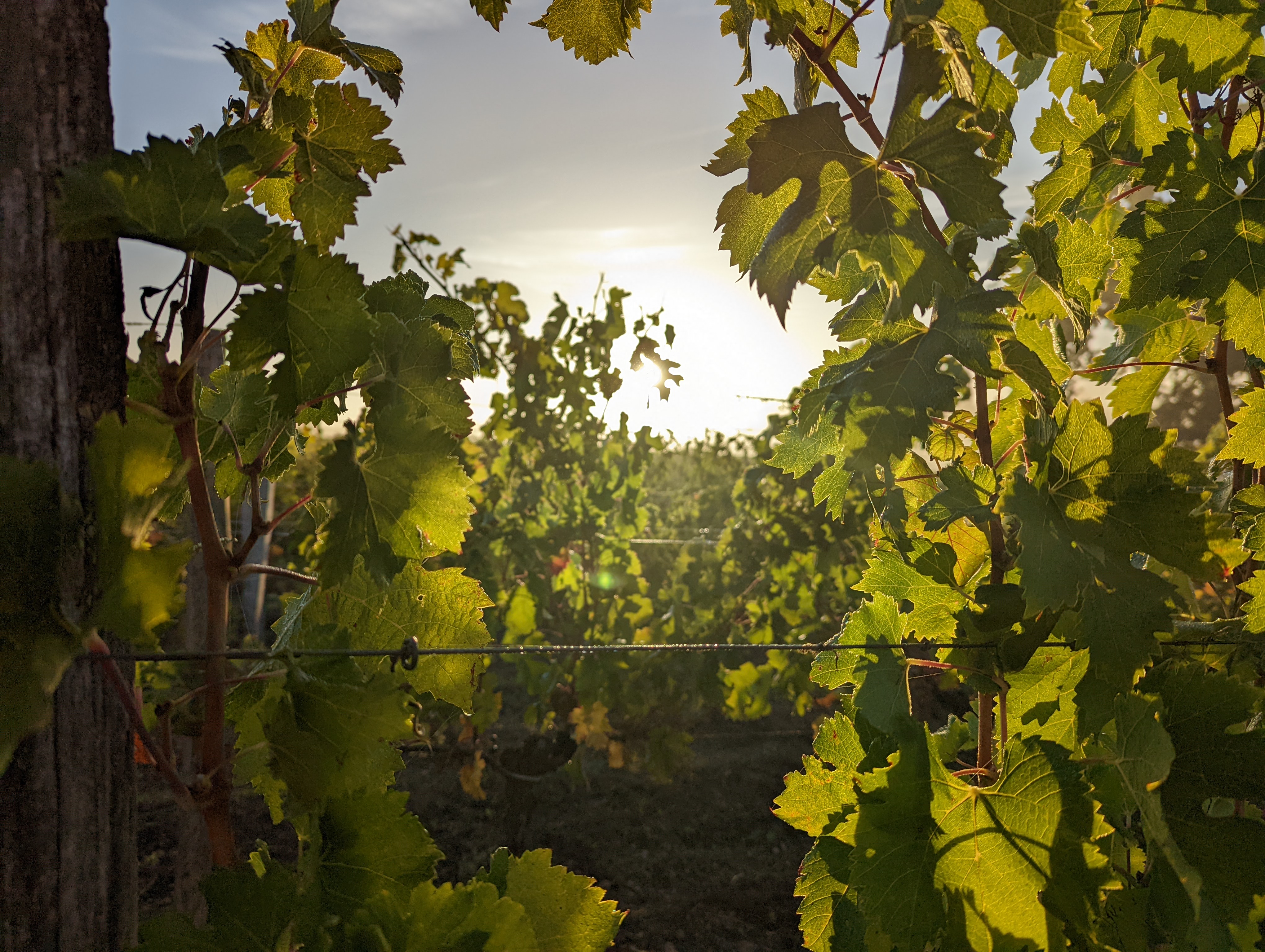Behind the scenes of honey production
Like wine, beekeeping has always been practiced on every continent. Evidence of this agricultural activity can be found in documents and books. It was particularly important in ancient Rome. Bees have always been part of man's environment.
Today, they're even part of the Sylvain family, with the installation of beehives in the gardens of Château La Rose Perrière in 2021. The bees have been gracing us with the fruits of their labor for two vintages now. In 2022, the first harvest of all-flower honey delighted our guests at breakfast. This year, the rich harvest has enabled us to produce a double 2023 vintage: an all-flower honey and an acacia honey. We wanted to honor those without whom our sweet tooth would be frustrated, and to ask questions about the honey-making process.
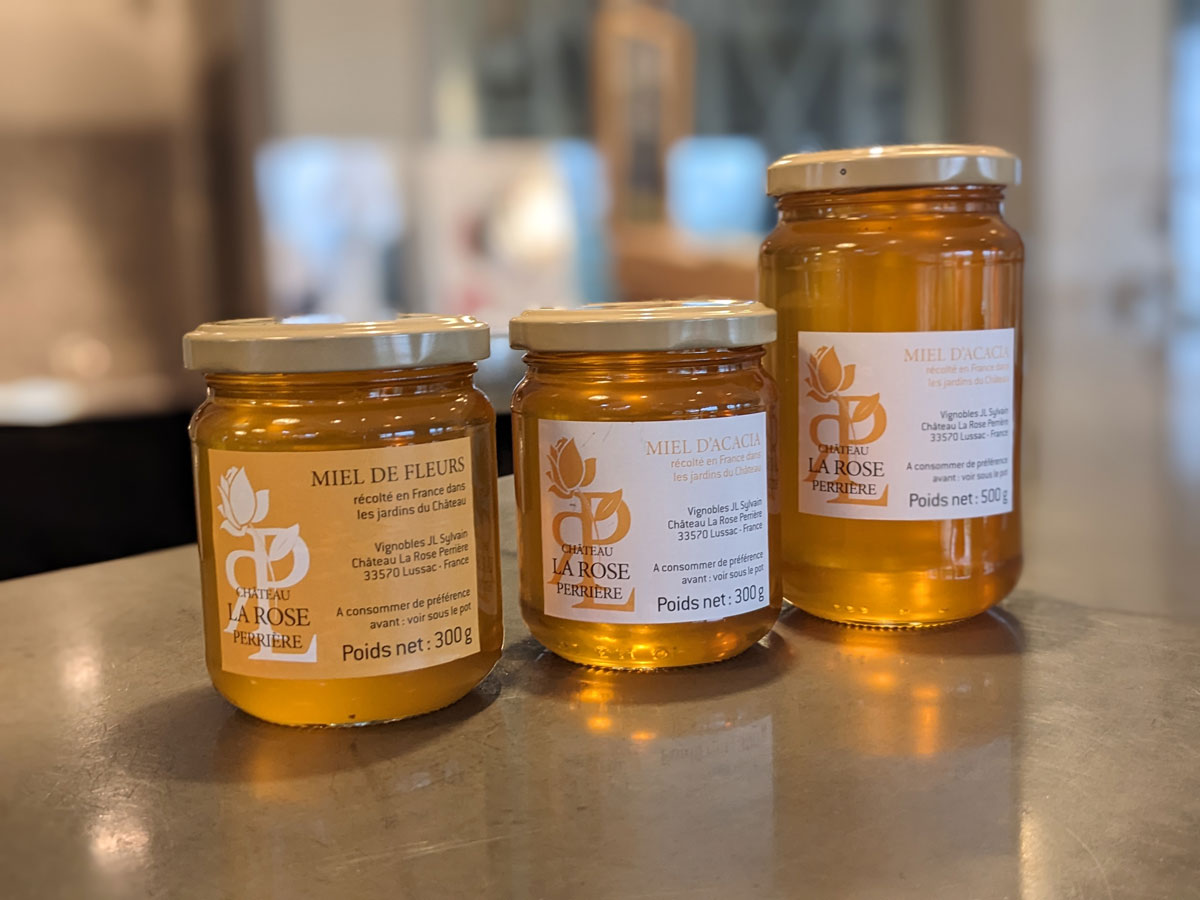
The bee
In a beehive, there are 3 profiles of bees: workers, false bees and the queen. Colony size varies with the seasons, from 10,000 bees in winter to 60,000 in summer. This number also fluctuates according to the location of the hive, the amount of food available nearby and the age of the colony, in particular the age of the queen. The colony is an extremely well-organized, hierarchical unit in which each member plays a well-defined role. In its short 45-day life, the bee will have no fewer than seven jobs: cleaner, nurse, handler, architect, ventilator, janitor and forager. The bee's job changes as it grows.
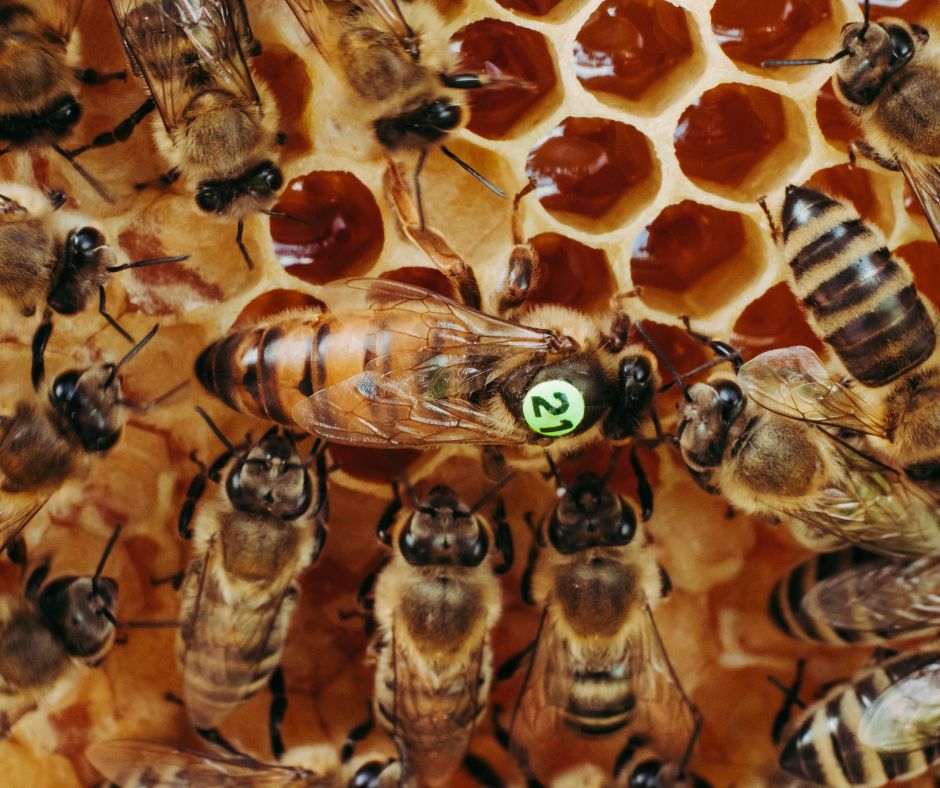
The queen has a key role in the hive: she lays eggs every day of her life, up to 3,000 a day, to renew the colony's population. These eggs then become workers, drones or queens! Fed on royal jelly, she is much larger than other bees and can live between 3 and 5 years.
Unlike the workers and the queen, drones don't have much to do in the hive. Their only decisive role is to fertilize the queen, enabling her to lay eggs. After mating with the queen, they lose part of their abdomen and die. They also often starve to death when hunted by workers, as they are unable to feed themselves.
The bee's work
Honey is produced from nectar. Nectar is a sweet liquid produced by flower nectaries, also known as intrafloral nectaries, which are present on 90% of flowering plants. Nectar is intended to attract pollinators.
When different plants bloom, bees gather nectar from the flowers: using their tongues, they pump the nectar into their crop at a rate of just a few milligrams. Forager bees visit thousands of flowers during their foraging flight, up to 2,000 a day. They travel up to 3 km around the hive to find their nectar. They make a lot of to-ing and fro-ing. When their crop is full, they return to the hive to transfer the nectar to other bees, who store it in the cells inside the hive and enrich it with enzymes. In this way, the bees exchange nectar from mouth to mouth. This phenomenon is called trophallaxis. It's the transfer of nectar from crop to crop between foragers and handlers. The bees' saliva and speed of execution act on the sugar, modifying the composition of the honeydew. They give honey its almost final substance.
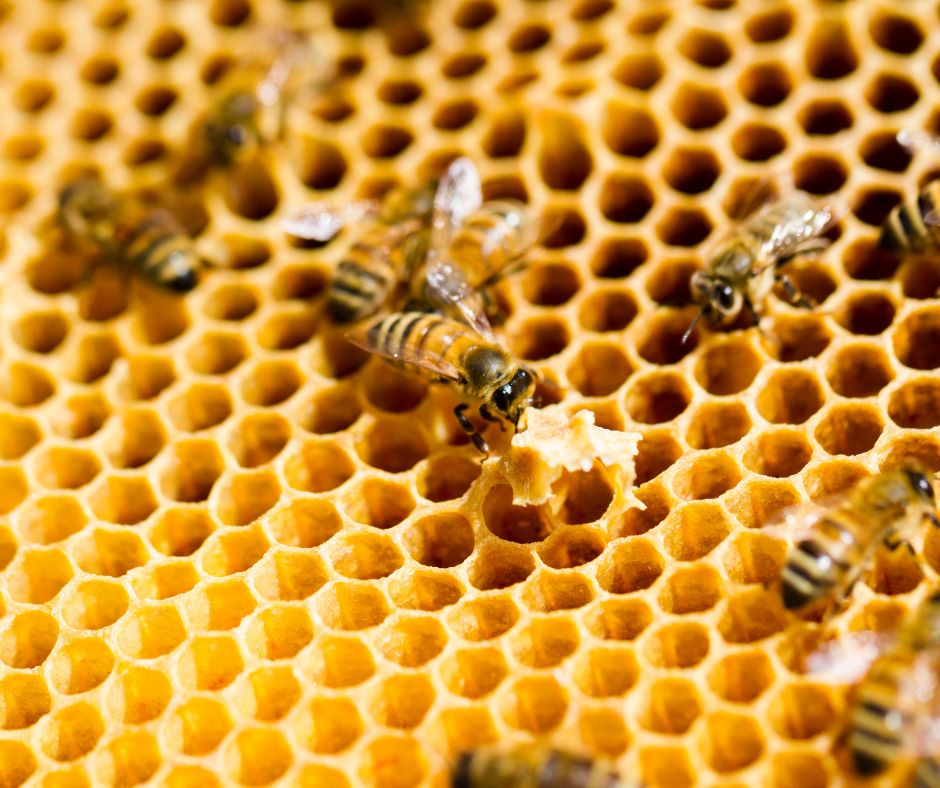
Other worker bees then intervene to dehydrate the nectar, which still contains over 50% water. This is the resting phase. The bees deposit the substance in the hive cells. In just a few days, the nectar will dry out and its water content will drop to 18%. On the other hand, by losing most of its water, nectar increases its sugar concentration from around 20% to almost 80%.
Once filled, each honeycomb is covered with a thin layer of wax, called an operculum. Honey protected in this way can be stored for several months, even years.
The beekeeper's work
Fusegates: a showcase for the precious nectar
The beekeeper plays a key role in the well-being of the colony and in the production of honey, since he or she is involved in the installation of the hives, a veritable habitat for the bees, and in the harvest, a delicate stage for the beekeeper. When the honey flow is high, the beekeeper places a honey super on the hive, into which the bees deposit their precious booty. This is usually done between April and July. In fact, it's advisable to install the supers in early spring, during April, when the hive population is starting to increase and there are many flowers in bloom.
There are many techniques for harvesting honey, but frame-to-frame is the best-known and most widely used. To remove the frames from the hive, the beekeeper wears a protective suit and calms the bees with a smoker. Harmless to bees, smoke plays an important role in masking the odors and pheromones emitted by bees when they sense danger. This is how they warn other bees in the colony of a threat, so that together they can defend the hive. The smoke-filled bees then descend into the hive, leaving the beekeeper free to collect the honey supers full of honey and return them to the honey house. To preserve the integrity of the honey, the beekeeper takes care not to damage the combs. A frame full of honey weighs between 1.5 and 2kg.
Extracting honey
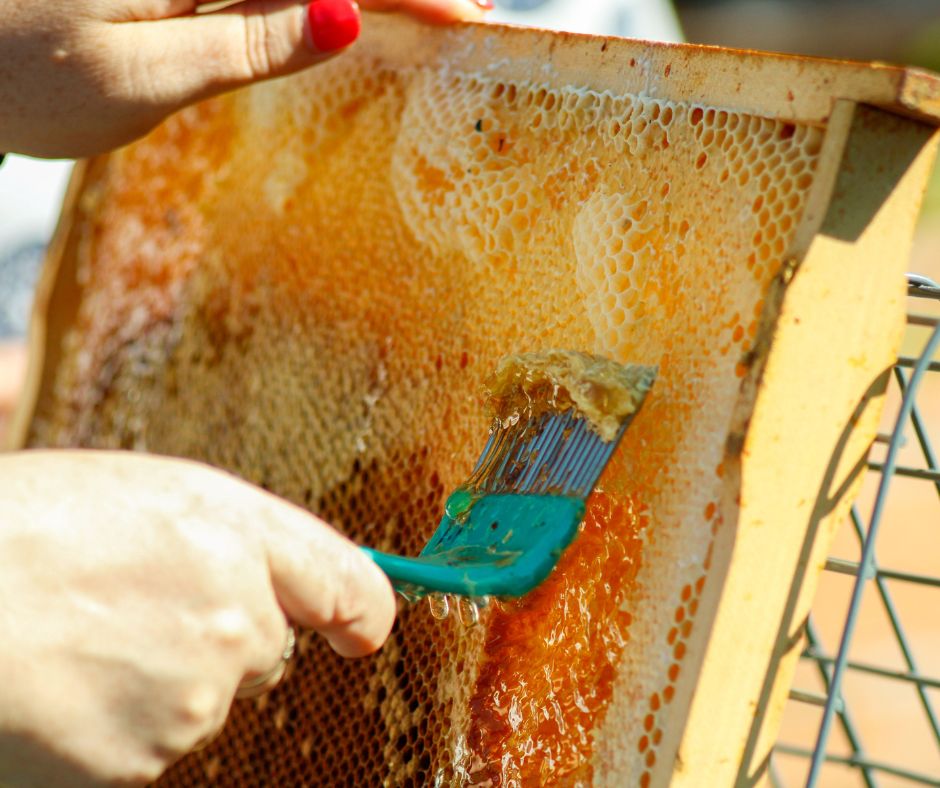
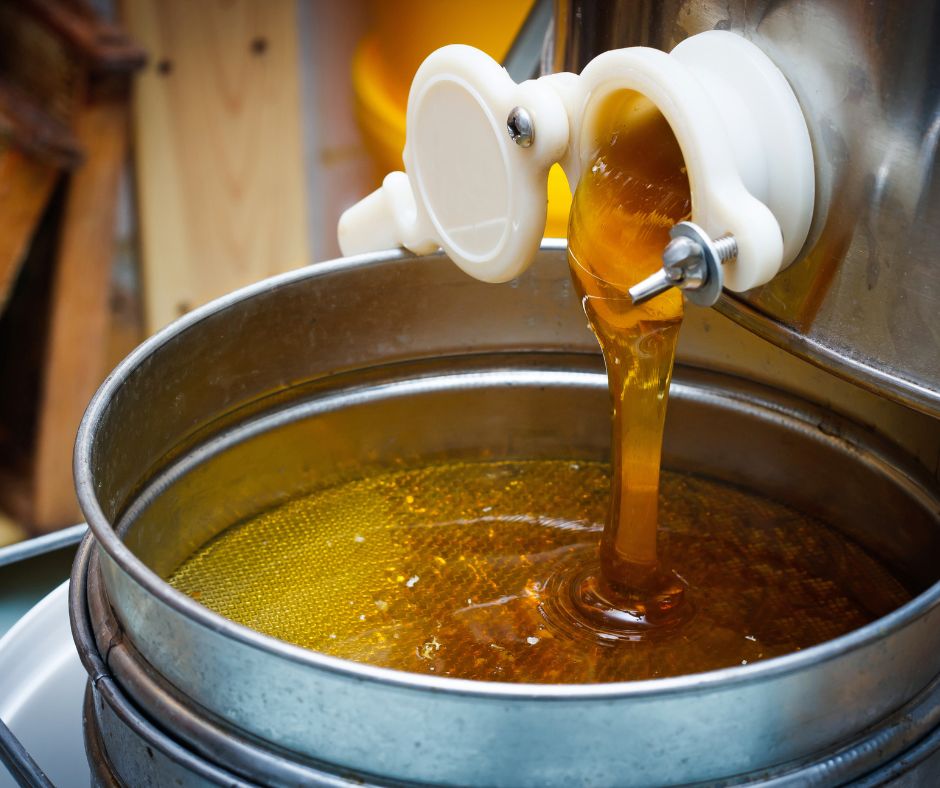
The honey frames are then opened by the beekeeper using a special knife, and placed in extractors : centrifugal force ejects the honey contained in the cells. The honey thus recovered is then filtered using a double-filter grid to remove any wax particles or other impurities that might render it unfit for consumption. Once filtered, it is placed in large tanks to settle. It is then left to rest at a temperature of around 20°C for several days. During this period, the last impurities, mainly in the form of scum, appear. Four or five days later, the beekeeper performs a final filtration. The honey is then racked and packaged in jars or bottles. The beekeeper's work is subject to strict potting rules to ensure quality honey: airtight jars, dry storage away from humidity and sunlight.
Working together for a natural product
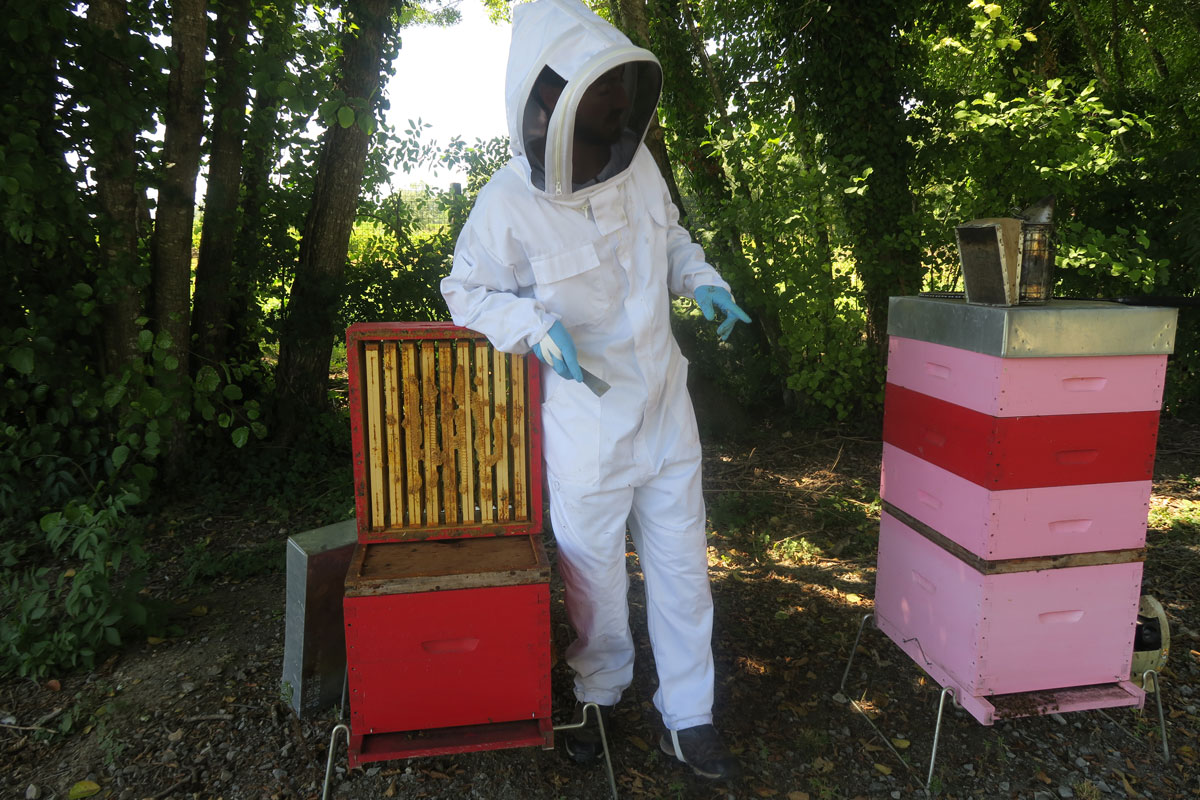
In all its diversity, honey is first and foremost the fruit of a long-term collaboration between bees and man throughout the beekeeping season, which in France begins in March and ends in September. It requires thousands of hours of work, hundreds of kilometers traveled by the bees, and meticulous intervention by the beekeeper at every stage of the harvest, taking care not to disturb the colonies.
Honey also plays a vital role in the colony. Honey is a vital source of energy for bees, especially in winter when flowers are scarce and temperatures are too low for bees to forage. The bees then draw on their honey reserves to survive the harshness of winter. Honey is how they live, how they keep warm, how they build comb and how they create new colonies. This is why the beekeeper leaves part of the honey harvest with the bees, the quantity required varying according to the honey needs of the colony. In general, it is recommended that bees have between 15 and 20 kg of honey per hive to survive. Harvesting in July allows the bees to build up their reserves before winter.
Last but not least, beekeeping today is faced with major environmental challenges, such as climate change, habitat loss and pesticide use. Beekeepers must take these issues into account in their day-to-day work to ensure the well-being of their colonies.
To the delight of our taste buds, this gourmet nectar is a natural product that can be kept for a long time...if our sweet tooth gives it time to age! The next time you taste honey, spare a thought for all those bees who share the fruit of their life's work with you!
